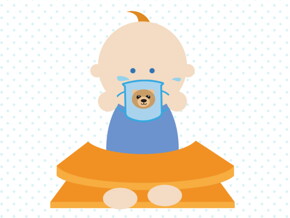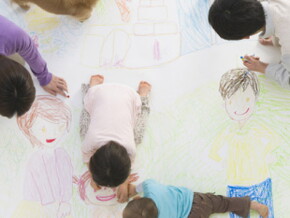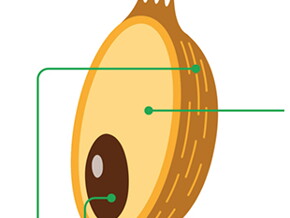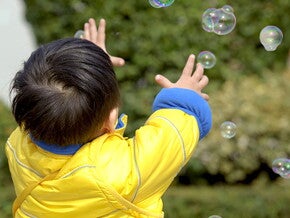
Toddler milestones at 18-24 months
Toddler milestones at 18-24 months
Your 18-24-month-old is learning new motor, language, and social skills every day. Here are some of the magical milestones you may see popping up on your social media feeds. Just make sure you capture your own proud-parent moments so you can share with your followers, too!

Sources
|
Ertem IO, Krishnamurthy V, Mulaudzi MC, et al. Similarities and differences in child development from birth to age 3 years by sex and across four countries: a cross-sectional, observational study. Lancet Glob Health 2018; 6(3):e279-91.
Okely AD, Ghersi D, Hesketh KD, et al. A collaborative approach to adopting/adapting guidelines – The Australian 24-hour movement guidelines for the early years (birth to 5 years): an integration of physical activity, sedentary behavior, and sleep. BMC Public Health 2017; 17(Supple 5):869. doi: 10.1186/s12889-017-4867-6.
Shelov SP & Altmann TR (Eds.). (2009). American Academy of Pediatrics. The complete and authoritative guide Caring for your baby and young child birth to age 5 (5th ed.). USA: Bantam Books.
Society of Health and Physical Educators (SHAPE). Active start: A statement of physical activity guidelines for children from birth to age 5. 2nd ed. Reston, VA: SHAPE America; 2009. Available at: https://www.shapeamerica.org/standards/guidelines/activestart.aspx
Tremblay MS, Chaput J, Adamo KB, et al. Canadian 24-hour Movement Guidelines for the Early Years (0-4 years): An integration of physical activity, sedentary behaviour, and sleep. BMC Public Health 2017; 17(Suppl 5):874 doi 10.1186/s12889-017-4859-6.
https://pathways.org/growth-development/toddler/milestones/ (Accessed December 5 2018)
https://pathways.org/topics-of-development/play/ (Accessed December 5 2018)
https://pathways.org/watch/parents-guide-structured-vs-unstructured-pla…(Accessed December 5 2018) |
Related articles

Why toddlers need to eat in between meals
Did you know? Toddlers may get up to 25% of the calories they need from snacks.
2 mins to read

Introducing a cup is key to developing your toddler’s feeding skills
Your toddler has come a long way since that first spoonful of puree went in (and probably came straight back out again!).
9 mins to read

How to deal with "No!"
Your "big baby" whose progress leaves you wide eyed with admiration and pride, is challenging your authority. Once you have gotten over the shock you must learn to remain calm but firm.
4 mins to read

Why do toddlers need fiber and how much should they eat?
Did you know? Many children around the world are missing out on essential fiber and whole grains.
3 mins to read

Disposable-diaper-changing routine
You’re going to do a lot of diaper changing over the next few months, so here’s a helpful diaper-changing routine. Check it off and make every diaper change smooth like your baby’s bottom.
2 mins to read

Finding the right childcare solution
A nanny, a child minder, nursery… Every choice has its pros and cons. Only you can decide which option best suits your baby and your household.
1 min to read

How to have a successful family mealtime
Mealtimes are a great opportunity for the family to come together to share food and enjoy each other’s company.
3 mins to read

Preparing Your Toddler For A Sibling
When a new baby arrives in the family, your oldest child gains a new status, that of the older brother or sister. But this also means that they will have to share their mummy and daddy.
3 mins to read

Fiber and Whole Grains Foods for your Toddler
Help your little one eat well by choosing foods containing fiber and whole grains.
1 min to read

Tips for potty training toddlers
Wondering how to potty train or when to start potty training? Read our potty-training tips and tricks to help toddlers hit the spot.
1 min to read

Baby Milestones
Here are a few key milestones to observe in your baby’s development. Watch and enjoy your little one's progress!
1 min to read

How lack of sleep can affect your toddler’s health
Did you know? Not getting enough sleep may lead to your toddler consuming extra calories.
2 mins to read

Potty Training for Babies
Around 18 to 36 months of age, your toddler may begin to show some interest in toilet training. Before you begin to toilet train, it's good to plan ahead and prepare as much as possible.
4 mins to read

How to understand fiber on nutrition labels
Sometimes, finding whole grains and fiber can take a bit of investigation. Many packaged foods come with a nutrition facts panel.
1 min to read

How to provide a healthy toddler diet
A healthy toddler diet now can set your little one up for a lifetime of healthy eating. Here are some nutrition building blocks for the best food for toddlers.
2 mins to read

Vision
Curious about your baby’s vision? Your little one sees the world very differently than you do. Here is a guide to the general development of a baby's eyesight.
1 min to read

What does a “healthy diet” mean for your toddler?
Did you know? As they reach 12-18 months old, toddlers may be more likely to miss out on several key nutrients.
3 mins to read

The Importance Of Vegetables In Your Child's Diet
Vegetables are one of the main food groups that your child should have in his diet.
2 mins to read

Your growing toddler – What to expect beyond 1000 days
Look back at the healthy habits you’ve encouraged, which have helped your toddler grow so far, and look forward to the exciting developments to come.
6 mins to read